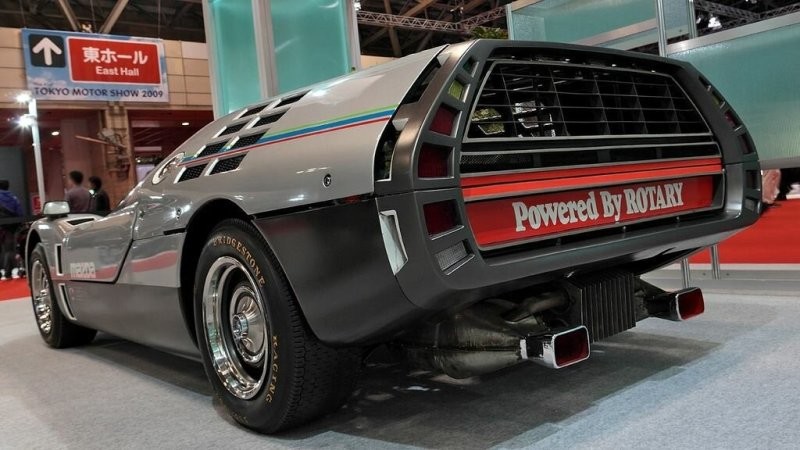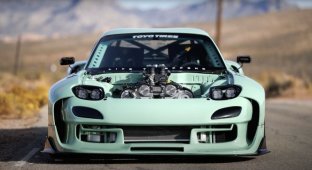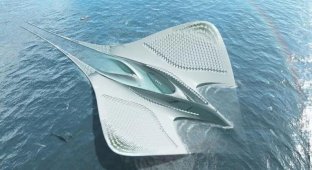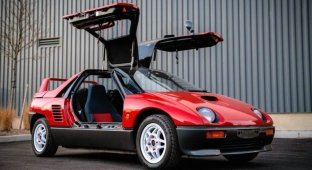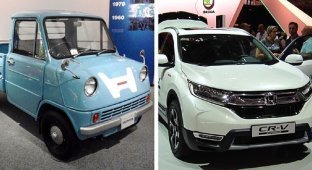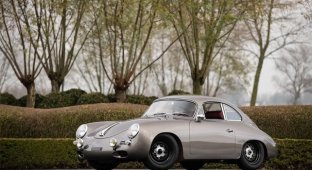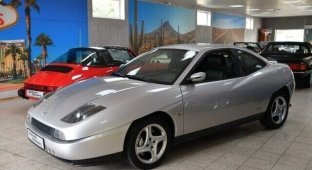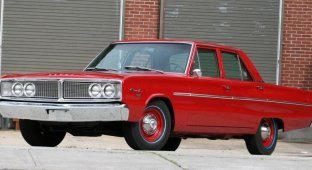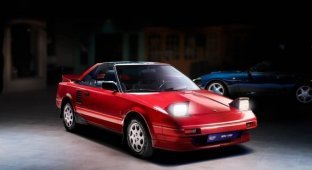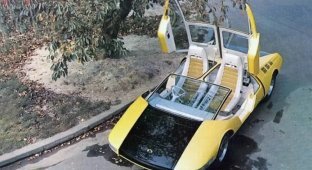Concepts forgotten by time: Mazda RX-500 sports car (9 photos)
For the first 30 or so years of its life, Mazda did not release not a single car. Instead, it produced machine tools, tuk-tuks and, in during World War II, various types of rifles for Japanese troops. 
In the late 1960s, automotive design took a new turn. of its development - in the era of wedge-shaped design. European manufacturers, primarily Italian, presented several bright models. The Japanese also did not stand aside and in 1970 Toyota, Nissan and Mazda built their wedge-shaped cars. Among them, perhaps the most impressive was the Mazda RX-500. 
In the early 1960s, the head of the Mazda company, Tsuneji Matsuda, came to understanding that in today's auto business to stay afloat with the help of primitive autorickshaws and cheap minicars are unlikely to succeed. Competitors were pressing on from all sides, and the brand needed demonstrate that Mazda, although small, is very progressive company. Just at that time, a new miracle engine was gaining popularity. German inventor Felix Wankel. Rotary piston motor demonstrated high power and at the same time had small dimensions and the weight. For Tsuneji Matsuda, the new unit seemed to be saving key, and in 1961 he bought a license for a rotary piston engine NSU Motorenwerke.
Height of RX-500 is only 1065mm 
In fact, the promising RPD has become a nightmare. It turned out, that this engine has a lot of inherent problems. Among them, rapid wear, high oil consumption and strong vibration. It took six long years Japanese engineers in order to bring the engine to serial condition. First the engine appeared under the hood of a small Mazda Cosmo sports coupe.
Rotary engine L10A 
The next bright stage in the rotary history of Mazda was the appearance concept coupe Mazda RX-500. In October 1970, it opened its doors 17th Tokyo Motor Show. Neither specialists nor visitors even expected to see at the stand of a Japanese company such an impressive car. It was a two-seater sports car with an incredibly long and sharp hood, low silhouette and sheer stern stylized the tail section of a spaceship from a science fiction film. doors RX-500s opened like butterfly wings, and through the transparent roof a rotary engine could be considered. The car came out so unusual that the manufacturer of children's toys, Matchbox, immediately bought the rights to produce a toy version of Mazda RX-500. The machine became incredibly popular, and were produced throughout 10 years, until 1981!
The doors of the car opened forward, and the hood covers up 
The main highlight of the car was its engine. He was placed in front rear axle, in the middle of the machine. Technically, it was modified two-section 10A rotary piston engine from Mazda Cosmo. He gave out 250 hp. and could "spin" up to 15,000 rpm. Paired with 4-speed manual transmission, this motor provided RX-500 excellent dynamics. Up to 100 km/h vehicle weighing 850 kg accelerated in just 5.1 seconds, and its maximum speed reached 240 km/h! 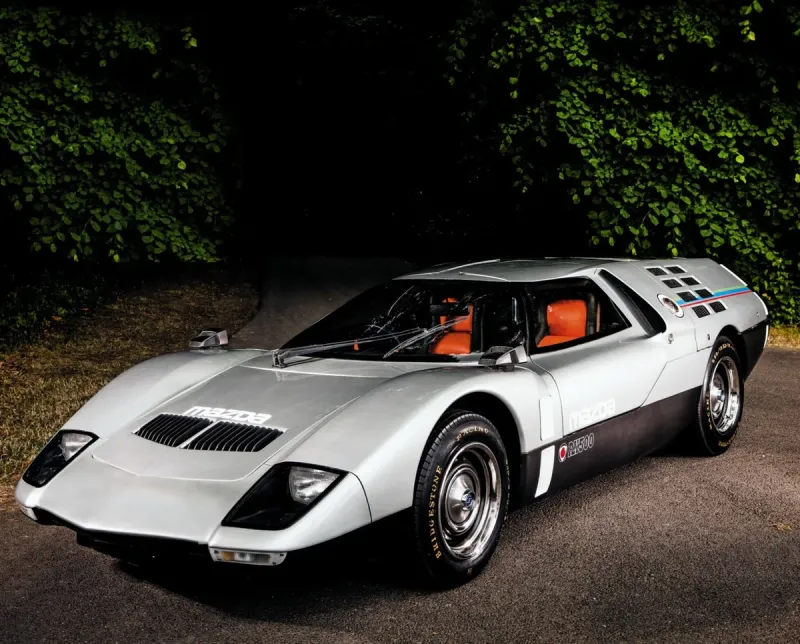
It should be noted that the Mazda RX-500 was more than just a marketing project. Throughout 1971, the car was driven on the high-speed test track Miyoshi test site in Heroshima. Based on the data obtained, Japanese engineers have done numerous studies on aerodynamics, which subsequently helped design the winning Lehman racing cars Mazda 787B.
In the cabin there were two sports seats with developed lateral support, while the decoration did not differ in frills. 
The degree of development of the only Mazda RX-500 prototype indicates that that the Japanese were seriously thinking about the prospects for mass production. The 10A engine was well debugged in production, and assembly frame bodies with fiberglass panels were not so difficult. In addition to interior details and many other elements, the RX-500 was strongly unified with other models of the company. 
However, these plans were not destined to come true. In 1973 the world the fuel crisis broke out, after which the price of gasoline rose significantly. AT these conditionsOviyah, the Japanese were afraid to produce a powerful and voracious sports car. The only example built is now in the Museum of Transport the city of Hiroshima. 